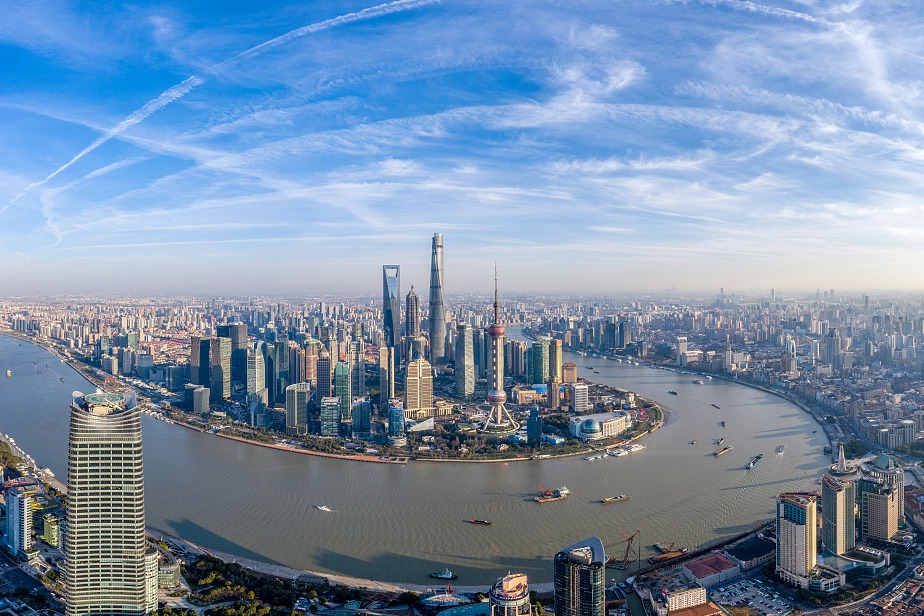Tower of culture

| The Yellow Crane Tower is a symbol of the city and has a history of more than 2,000 years. Photos provided to China Daily |
| The East Lake Scenic Area is filled with curiosities. Photos provided to China Daily |
China's most famous river city offers a visitor many cool opportunities
Wuhan is a city with both an ancient history and a thriving present. During the Warring States Period (475-221 BC) it was the land of the brilliant Chu. Starting here, merchants followed the great Yangtze River and lake network to expand businesses throughout the entire country.
Wuhan is also the birthplace of the 1911 Revolution, in which anti-Qing forces overthrew the government, and in doing so, ousted a 2,000 year-old feudal society.
At the end of the Qing Dynasty (1644-1911), under the influence of the Westernization Movement, the city became a cradle of industrial and urban development and the colonial powers made their presence felt. When visitors roam local streets, especially near the river, they will discover many old architectural styles harking back to the 1920s and 1930s.
The ideal months to visit Wuhan are from March to April and from September to October. Travelers are advised to avoid the searing summer because the city is known as a "steam box". The following five are Wuhan's most attractive spots.
1. Yellow Crane Tower

When the Chinese talk about Wuhan, the Yellow Crane Tower is the first place that is mentioned. This magnificent piece of architecture is situated on Snake Hill in Wuchang district and is a symbol of the city.
The original three-story building was first built during the Three Kingdoms period (AD 220-280) as a military watchtower. In the Tang Dynasty (AD 618-907), it was a retreat for poets and the literati.
It has been destroyed and rebuilt many times and was last rebuilt in 1981. It now stands 51.4 meters high, has five floors and is based on the original designs. Each floor appears to have been designed to resemble a yellow crane spreading its wings to fly.
Each floor has a different theme. The first floor has a long and wide painted porcelain mural that depicts clouds, rivers and cranes to represent a romantic mood in heaven.
The third floor mainly shows poems written to praise the tower in different dynasties.
When visitors reach the top of the tower and they are treated to a fabulous panoramic view of the Yangtze River, its bridge and the surrounding buildings in Wuhan city.
2. Guiyuan Buddhist Temple
The temple was originally established in the early Qing Dynasty and the design is compact yet exquisite. Many ancient pines and cypresses grow in the temple grounds, and in spring, magnolia and plum flowers bloom everywhere.
The highlight of the temple is its hall that hosts a collection of thousands of classic Buddhist scriptures and many other valuable relics. The Arhat Hall in the south courtyard is also awe-inspiring thanks to its 500 sculptures.
3. The East Lake Scenic Area
East Lake is China's biggest downtown lake with a total scenic area covering more than 100 square kilometers. Because of its twisting banks and crisscrossing ponds and creeks, it is called "a lake with 99 bays".
The Moshan Hill area is characterized by various flowers, such as plum blossoms, orchids, azaleas, Chinese roses and lotus leaves.
The most famous is the Cherry Blossom Garden.
4. Hubu Lane
There is an old lane that is dotted with many Qing Dynasty-style buildings, which are well-known for serving Wuhan specialty dishes.
Hot dry noodles (reganmian) is a traditional dish with sesame paste providing a good base. Tofu skin (doufupi) is a famous snack and there are three elements in the skin: beans, glutinous rice and eggs. The stuffing includes ham, corn and seafood and there is a delicious contrast between crispy skin and soft center.
Duck neck (yabozi) is made by marinating the duck with 28 seasoning ingredients, creating a spicy but fragrant taste.
Wuhan has a thriving fishing industry, and steamed fish from the Yangtze River is a favorite dish.
5. Hubei Provincial Museum
The museum is located in the Wuchang District and is the biggest ancient musical instrument exhibition hall in China.
The architectural style of the building is based on a Chu State palace with many tiers and wide eaves.
The museum's most precious treasure is its ancient Chime Bells, the largest bronze musical instrument ever discovered. With a cluster of bells of different sizes, it can play various tones, and the timbre is amazing.
The Chu Culture Exhibition Hall features regional culture, and most of the relics displayed are bronze wares, lacquer works, bamboo and wooden artifacts, and silk-knitted products.
Today's Top News
- Nation's euro bond sale shows investors' confidence
- No soft landing for Tokyo's hard line
- Commerce minister urges US to increase areas of cooperation
- Strong demand for China's sovereign bonds signals global confidence
- Ministry urges Japan to 'maintain self-respect'
- Forge closer ties with Zambia, says Li
































